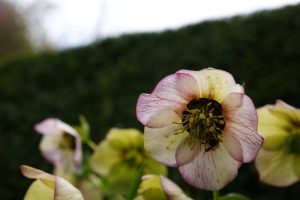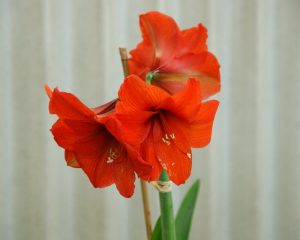December and January Gardening
“In the bleak midwinter….ground as hard as iron, water like a stone”.
This is a difficult time for plants: when water freezes in the ground they cannot replace water lost from the leaves. They have adapted by losing their leaves and becoming dormant, or by having waxy, waterproof leaves.
In December
- Prune birches, Japanese maples now they are dormant, removing crossing branches and reducing overall size.
- Prune grapevines, apples, pears, currants and gooseberries. The aim is to achieve an open-centred tree or bush. Renovation pruning of neglected trees is a three-year job (search apples and pears: renovating old trees at rhs.org.uk)
- Erect a rain shelter over wall-trained peaches and nectarines to protect against leaf curl until May.
- Take hard wood cuttings from trees like mulberry, tamarix or euonymus: take the current season’s growth, cut into 10-20cm sections with about 4 buds. Cut below a node at the base and make a slanting cut away from a bud at the top. Insert into gritty compost and leave in a cold frame or unheated greenhouse.
- ‘Force’ rhubarb by covering with straw and a dark bucket or special forcer pot.
- Forget the tinsel! Coloured stems from acers, cornus, willows and bamboos go well with holly, ivy and fir for your seasonal decorations.
- Have a very happy Christmas.

Hellebores {Christmas roses)
In January
- Start pruning Wisteria: cut back the last season’s growth to 2-3 buds of the older wood
- Finish pruning mulberries, walnut, birch and
- Hard prune bush roses, since flowers are produced on the new season’s growth. Cut them back to a strong outward facing bud and remove dead and crossing branches.
- Shake snow off evergreen shrubs to prevent damage to branches and ‘scorching’ of foliage.
- Feed apple trees in late winter with ‘growmore’ or other suitable fertiliser, compost or manure by sprinkling over the area just beyond the branch canopy. Dessert apples need more potassium, cookers more nitrogen, I am told.
- Once your Christmas hippeastrum/amaryllis has finished flowering, feed it fortnightly to build up the bulb. Cyclamen benefit from the same treatment.
- Start chitting early potatoes in trays in a cool, light, frost-free location.
- Sow begonia, lobelia, salvia and pelargonium in a heated propagator.
- Enjoy snowdrops, winter aconites, hellebores and Iris unguicularis(stilosa) (pictured below). It is worth cutting back the foliage of the last two to see the flowers better.
Wishing you a happy and productive 2020.

Hippeastrum